Camping at Marble Point
The flight out to Marble Point was spectacular, crossing the still-frozen Ross Sea and turning slightly northwards towards the point. We dropped the sling load, and spent 45 minutes buzzing the area trying to locate fossil colony mounds from the air and terrorizing the current population of Adélies. With no luck from our aerial survey we dropped camp at a midway point between the Marble Point fueling station and the point itself. We set up camp quickly, and hiked down towards the point surveying the highest beach terraces. Within an hour of landing on the beach, Steve had located his first site, where we located Test Pit 1. The sites are distinguished by small pebbles carried by the birds over years masking the larger rocks that cover the point. A subtle enough sign not to be visible from the air, but clearly distinguishable on the ground. A bit more walking and we found a row of sites on the highest terrace, and then located two more sites on a promontory, one of which appeared to have been the one sampled by the Italians. We grabbed the excavation gear, and began one meter test pits. Mike and I dryscreened while Steve dug, and the sediments were as dry as those I’ve encountered in southwestern cave sites. However, because of the extreme aridity of the continent, these open-air sites preserve fossils of bone, eggshells, feathers, food items, and more. We even found most of a mummified chick in one test pit. The sites consist largely of gravels that are captured by the first screen, and a clearly distinguishable reddish ornithogenic soil layer, formed by the organic-rich excrement of the penguins. When the soil turns grayish, the bottom of the deposit has been reached. We completed two test pits the first day, and found numerous bones and could see many microfossils in the matrix.
Day two started out very cold and windy, and we returned to the high promintory to excavate test pits there. These pits were less productive, with little visible bone. While we worked, a large group of Adélies rounded the point and began to head our way. I went to photograph them, and was concerned about spooking them and scaring them away, but found my fears were groundless. They are unafraid of humans, and quite curious about what we were doing. Many times when they would spot us they would all start toddling over in a hurry to see whether we were funny-looking penguins or what. They are quite hilarious, looking like a troop of Charlie Chaplins right down to the stumbles and pratfalls. After the initial excitement of seeing us on the beach, they settled down and napped alongside us. They are very interesting and unusual birds, but I can’t help thinking that they are very lucky there are no land predators in the Antarctic. After we completed the test pits we headed out to a rocky point near open leads through the ice, where Weddell seals and penguins were congregating. It was a powerful reminder of where we are.
That evening was New Years Eve, and we had been invited to the fuel depot by the caretakers for dinner. Kim, Jeff, and Dave were gracious hosts, and we dined on barbequed steaks, potatos, salads, and bread, along with some wine we had brought with us. It was a fine way to welcome the new year. The next day dawned clear and calm, and with our work done and no choice but to lay over due to the helicopter pilots taking the day off, we hiked up to the snout of the Wilson Piedmont Glacier, and around the Gneiss Point surveying for more fossil colonies, where I spotted this spectacular marble sea stack.
I think one of the most notable things about remote camps in Antarctica is the quiet. With a frozen sea, there is only the sound of the wind. And except for gull relatives called skuas, penguins, and seals, there is no animal life at all. There are no insects, rodents, or reptiles on the land. Anything that can’t make a living from the sea has not survived. As the McMurdo locals respond when someone complains, “it’s a harsh continent,” and these words are so true.
We are back in McMurdo now resupplying and processing sediments, and on Friday we head out once more- to Cape Crozier first, where there is the second largest Adelie colony on the continent as well as an Emperor penguin colony, and then we will move camp to Cape Bird. Steve wants to sample modern colonies at Crozier for a comparison to fossil ones, and search for more fossil colonies on Bird. I should get my fill of being around penguins by then. I will update again when I return.
Click on the images below for a larger version.
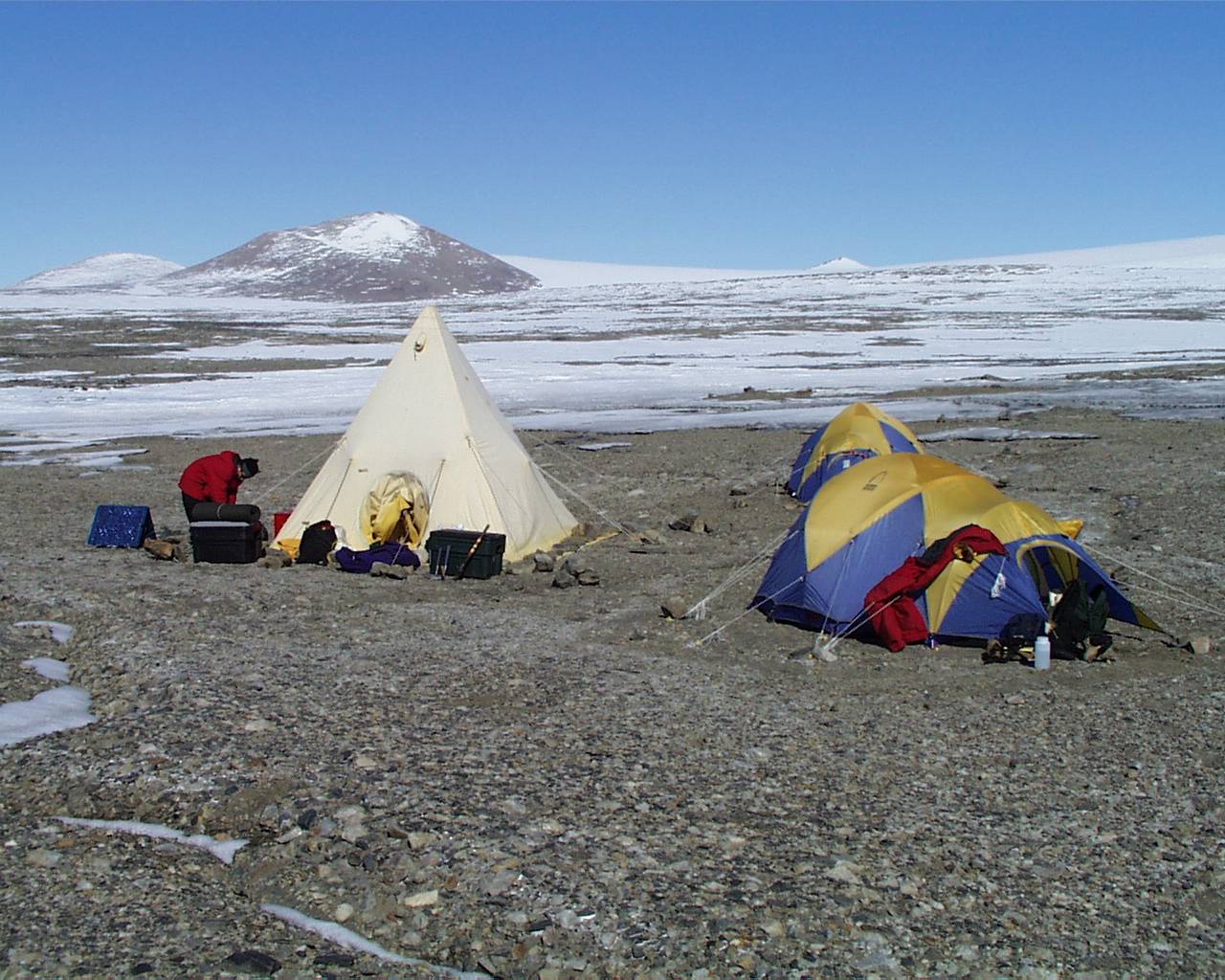 |
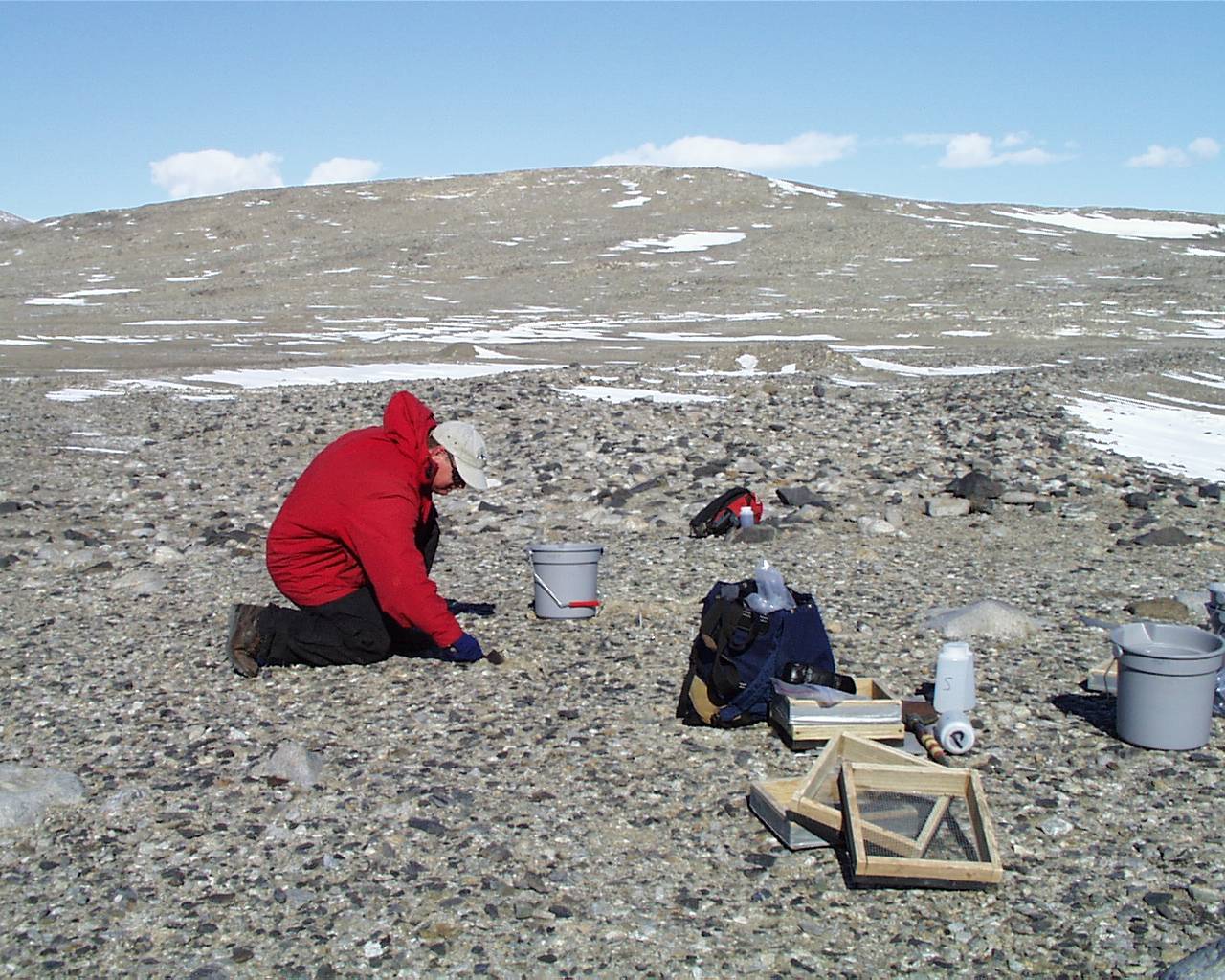 |
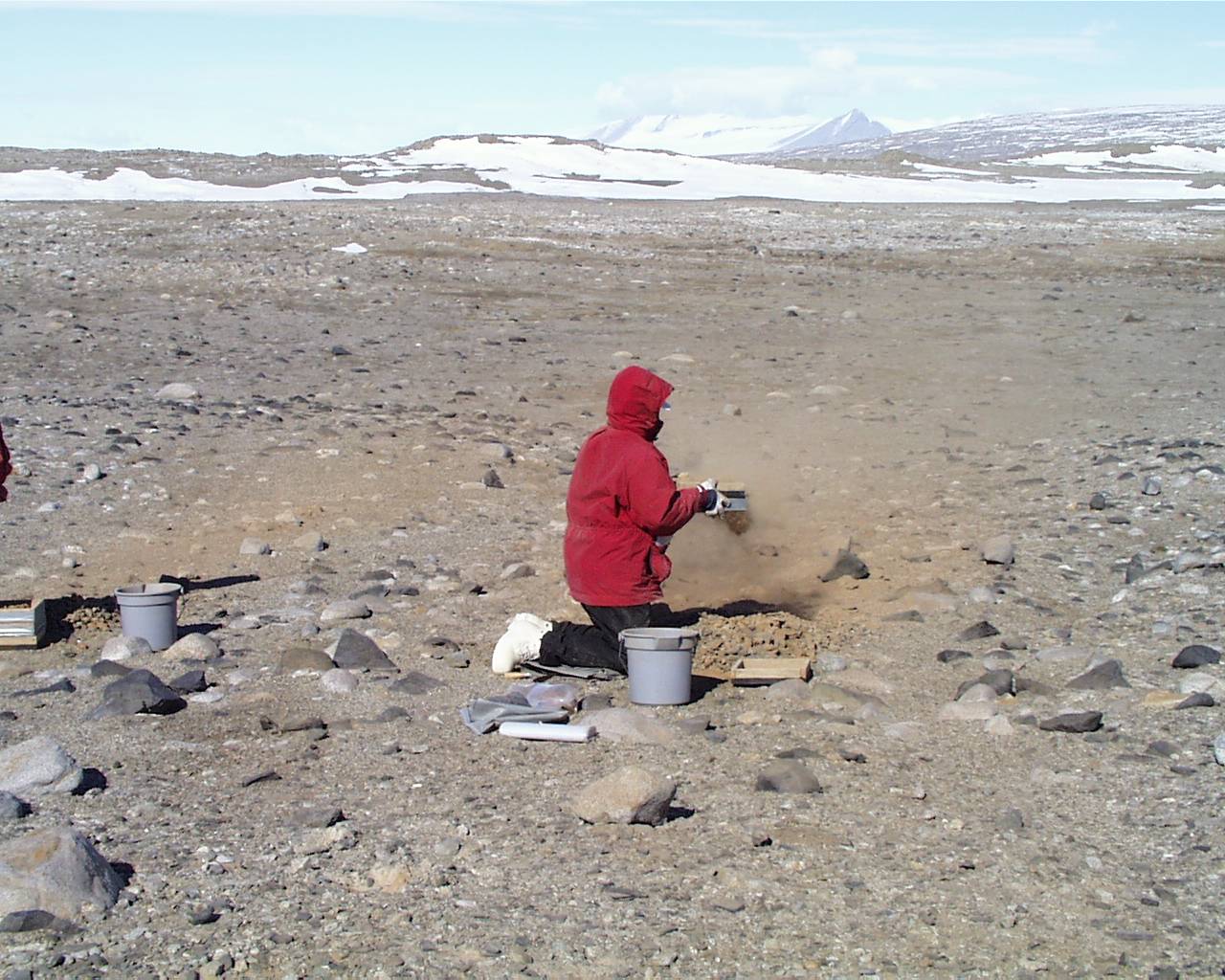 |
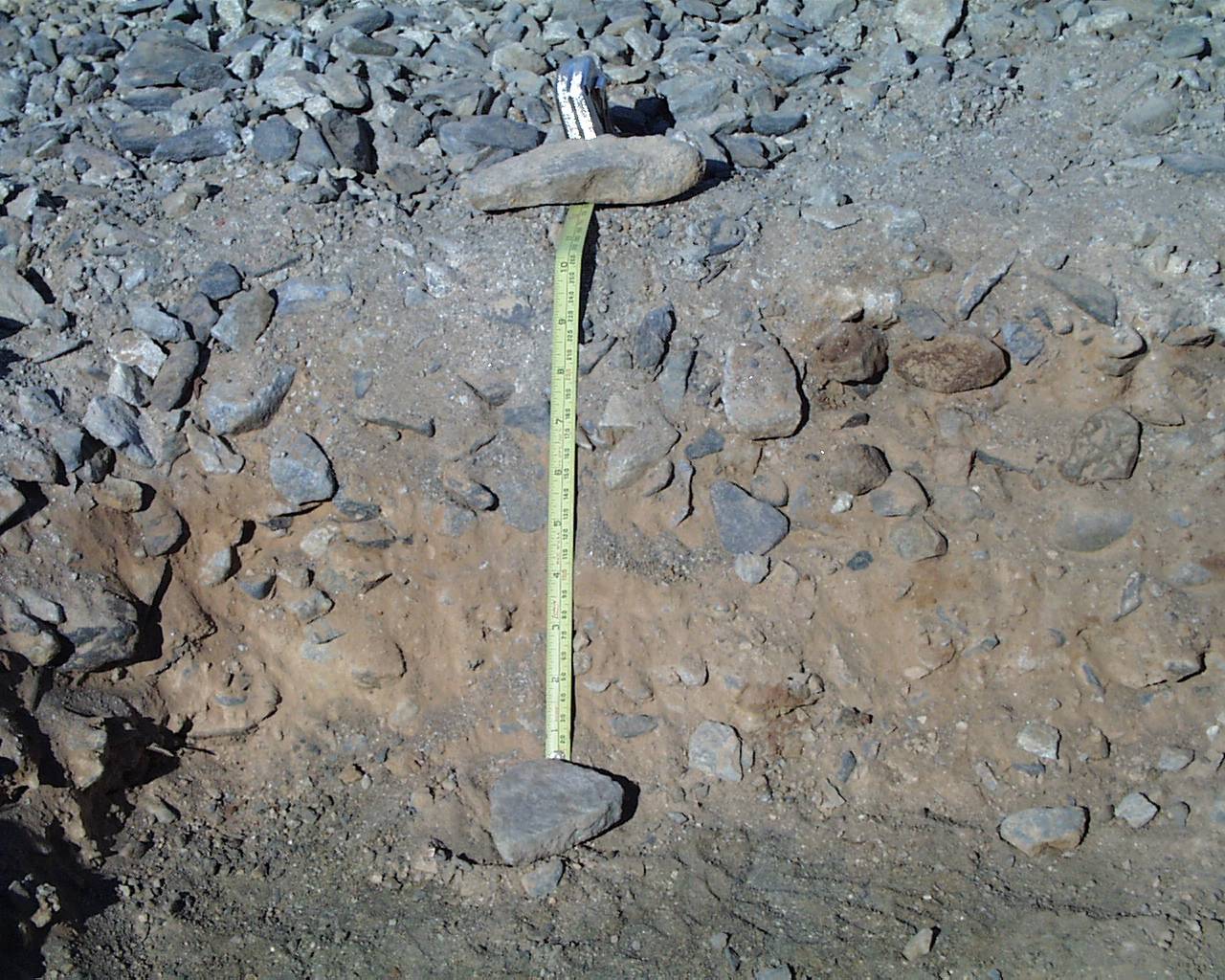 |
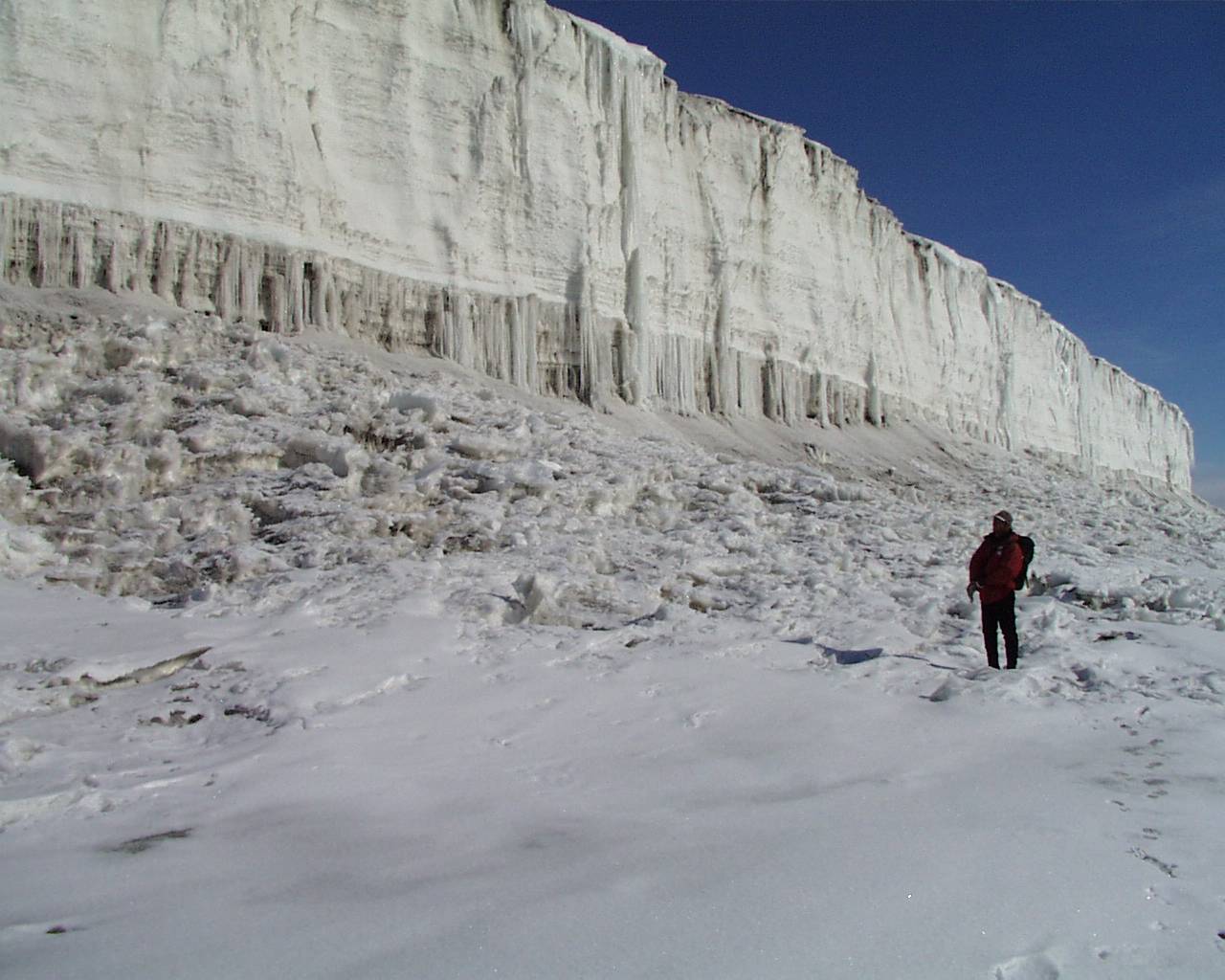 |
 |